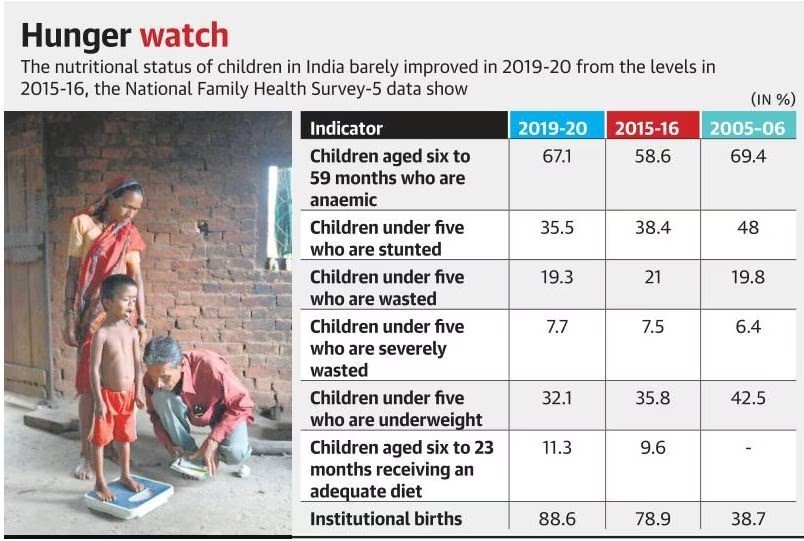PREVIOUS
NFHS Survey 5
November 27 , 2021
1485 days
1373
0
- The National Family and Health Survey (NFHS) 5 has been released.
- This is the most comprehensive survey on socio-economic and health indicators in the country.
- The previous four rounds of the NFHS were conducted in 1992-93, 1998-99, 2005-06, and 2015-16.
- These have been conducted by the Ministry of Health and Family Welfare, with the International Institute for Population Sciences (IIPS) Mumbai.
Highlights
- There were 1,020 women for 1000 men in the country in 2019-2021.
- This is the highest sex ratio for any NFHS survey as well as since the first modern synchronous census conducted in 1881.
- The Total Fertility Rate (TFR) has also come down below the threshold at which the population is expected to replace itself from one generation to the next.
- TFR was 2 in 2019-2021, just below the replacement fertility rate of 2.1.
- Children’s nutrition improved but only at a slower pace.
- Though India might have achieved food security, 60% of Indians cannot afford nutritious diets.

Leave a Reply
Your Comment is awaiting moderation.


